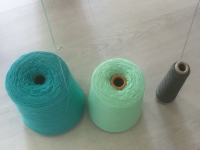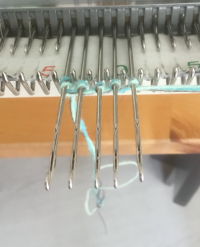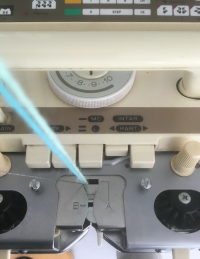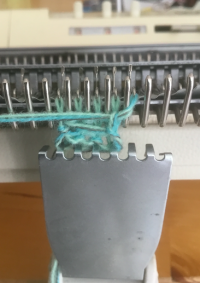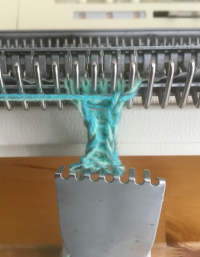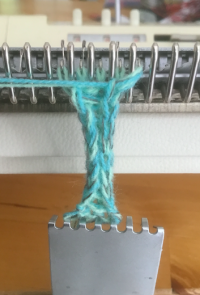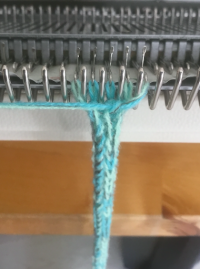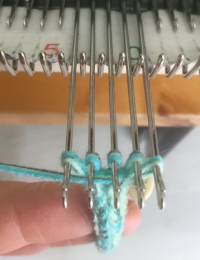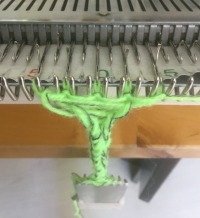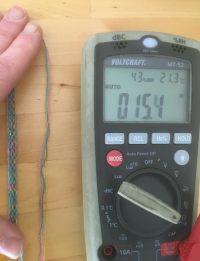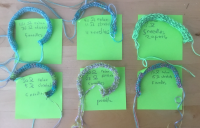Difference between revisions of "ResistanceKnitting"
| Line 28: | Line 28: | ||
Sic examples and the values. | Sic examples and the values. | ||
| + | |||
| + | [[File:rk20.png|200px]] The tube which is stretched, will light up the LED at that side. | ||
| + | |||
| + | [[File:r21.png|200px]] Depending on the stretching the pitch of the tone changes. | ||
| + | |||
| + | An example of a swatch using the variable resistance of the knitted tube. | ||
Revision as of 13:08, 9 May 2020
This page is showing knitting tubes with conductive thread.
Cones with conductive thread and normal yarn.
The tube is knitted on 5 needles. The E loop mounting is used for all threads.
Setting of the slider, with one of the part knobs set. The tension 8-10, depends a bit on the thickness of the yarn.
The knitting is done only to one side, in a few tours, the tube is formed. Ending in tension 10 (maximum) and take of as usual.
With thicker yarn, the five needles are a needle apart.
Measuring the resistance in a relaxed and a stretched state.
Sic examples and the values.
 The tube which is stretched, will light up the LED at that side.
The tube which is stretched, will light up the LED at that side.
200px Depending on the stretching the pitch of the tone changes.
An example of a swatch using the variable resistance of the knitted tube.
